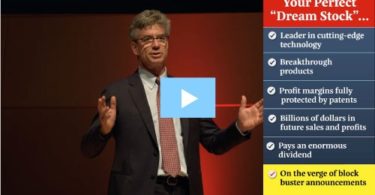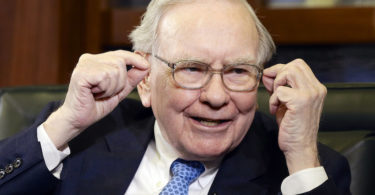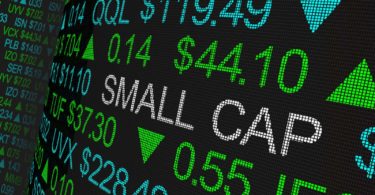Company Overview
In 2022, the film CODA won the Academy Award for Best Picture ([1]), putting the term “CODA” in the spotlight. Coincidentally, CODA is also the NASDAQ ticker for Coda Octopus Group, Inc., a small-cap technology company unrelated to the film. Coda Octopus is an established provider of advanced subsea imaging sonar and diver communication technologies. Its flagship product line, the Echoscope® series, is the world’s only real-time 3D/4D/5D/6D underwater sonar system ([2]) ([2]), capable of generating detailed 3D images of underwater objects even in zero-visibility conditions. The company also developed the Diver Augmented Vision Display (DAVD) – a high-tech head-up display helmet for divers – in collaboration with the U.S. Navy ([3]) ([3]). These proprietary technologies serve a niche but critical market, with applications in offshore energy, underwater construction, defense (naval and port security), and search-and-rescue operations ([3]) ([2]). In addition to its products segment, Coda Octopus has an engineering services division (often contracting with U.S. defense primes) – together, these segments make CODA a unique player at the intersection of marine technology and defense.
Dividend Policy & Shareholder Returns
Dividends: CODA does not pay a dividend. The company has never declared or paid cash dividends on its common stock, and management intends to retain all earnings to finance growth, with no plans to initiate dividends in the foreseeable future ([2]). Consequently, CODA’s dividend yield is 0%. This retention strategy reflects CODA’s focus on R&D and expansion rather than returning cash to shareholders at this stage.
Share Buybacks: Coda Octopus likewise has no active share repurchase program as of the latest fiscal year ([2]). Only minimal buybacks have occurred (e.g. ~$15,600 in FY2024 to acquire treasury shares) ([2]) ([2]), likely for employee plans or other small transactions. Overall, shareholders should not expect near-term cash returns via dividends or large buybacks – instead, the investment thesis rests on capital appreciation driven by the company’s growth.
Financial Position: Leverage & Liquidity
Cash & Liquidity: CODA maintains a strong liquidity position. As of October 31, 2024, the company held $22.5 million in cash and equivalents ([2]), representing roughly one-quarter of its current market capitalization. This cash balance even grew slightly to $24.5 million by April 30, 2025 ([3]) ([3]), thanks to positive operating cash flow (more on that below). Ample cash provides flexibility for R&D, acquisitions, or other strategic uses, and it has also become a notable income source – in FY2024 CODA earned ~$0.94 million in interest income from its cash holdings ([2]) amid higher interest rates.
Debt & Leverage: Coda Octopus is essentially debt-free. The company carries no long-term debt on its balance sheet – total liabilities are just $4.4 million (mostly working capital items and lease obligations) against $57.5 million in assets ([2]) ([2]). CODA does have a $4 million revolving credit line with HSBC, but this remains undrawn (zero balance as of Oct 31, 2024) ([2]). With no interest-bearing debt outstanding, CODA’s interest coverage is not a concern – in fact, the company generates net interest income. This conservative balance sheet means leverage risk is low, and the enterprise value (EV) is significantly less than its market cap due to the substantial net cash position.
Maturities: Given the lack of debt, CODA faces no looming debt maturities or refinancing risks. The only long-term liabilities on record are a small deferred tax liability and lease commitments ([2]), which are modest relative to the company’s cash. This clean capital structure insulates the company from interest rate volatility and credit market conditions, an advantage in a rising-rate environment. It also positions CODA to raise debt in the future if needed for expansion, since it currently has capacity to lever up without straining its balance sheet.
Recent Performance & Profitability
Revenue Growth: CODA’s growth has been moderate with a recent boost from acquisition. In FY2024 (year ended Oct 31, 2024), revenue grew ~5% to $20.3 million ([2]). However, growth accelerated in the latest quarters due to a new business unit: in FQ2 2025 (quarter ended April 30, 2025), revenue was $7.0 million, up 31.8% year-over-year ([3]). This jump included ~$1.3M from Precision Acoustics Ltd., an acoustics sensor company CODA acquired in late 2024 ([3]). Excluding acquisitions, organic growth has been mixed. The Marine Technology (Products) segment – which sells CODA’s sonar and DAVD systems – saw only +10% revenue growth in FQ2 2025 ([3]), and actually declined by 36% in the prior FQ1 2025 ([4]) ([5]) due to weak overseas demand. Meanwhile, the Engineering Services segment (defense contracting services) grew strongly (e.g. +76% in FQ1 2025) ([4]), helping offset the product volatility. Management attributes some of the product sales softness to macro factors (more below), but overall, recent results show low-to-mid double-digit growth when acquisitions are included.
Margins and Earnings: CODA delivers high gross margins, reflecting its proprietary tech and niche focus. Gross margin was ~70% historically, and came in at 64–66% in recent quarters ([3]) ([4]) (a slight dip due to sales mix and integration of the new lower-margin unit). Operating expenses have risen (notably R&D and SG&A for the new acquisition and product development), which compressed operating margin. In FQ2 2025, operating margin was ~15.5% (vs 25% a year prior) ([3]), and net margin was ~13%. For full-year FY2024, CODA still achieved a net profit of $3.65 million ([2]) ([2]), up 17% from FY2023. That equated to EPS of $0.32 (diluted) for FY2024 ([2]). Quarter-to-quarter, earnings can be lumpy for this small firm, but the trend has been positive: FQ1 2025 EPS was $0.08 vs $0.06 prior ([4]), and FQ2 2025 EPS $0.08 vs $0.13 prior (the drop in Q2 reflecting higher costs) ([3]) ([3]).
Cash Flows: CODA consistently generates positive operating cash flow, though working-capital swings influence the level. In FY2024, net cash from operating activities was ~$2.45 million ([2]). Free cash flow was lower than net income due to investments in inventory and receivables growth ([2]). Capital expenditures are fairly light (around $0.5 million in FY2024) ([2]), meaning the core business is not very capital-intensive. The company did spend $4.4 million on acquisitions in FY2024 (net of cash acquired) ([2]) ([2]), which was a strategic use of cash. With its strong cash reserves and ongoing profitability, CODA has the financial capacity to fund R&D and growth initiatives internally, without needing external financing.
Valuation & Comparables
At its recent share price (around $8), CODA’s valuation reflects its solid balance sheet and niche growth prospects. The stock trades at a trailing P/E of ~26 (TTM) and a forward P/E of ~18 ([6]). This implies that investors expect earnings to rise in the coming year (forward estimates factor in growth from defense contracts and new products). In absolute terms, a ~26x multiple on trailing earnings is above the market average, but CODA’s earnings are currently depressed by heavy R&D and its recent acquisition integration costs. The enterprise value (EV) is notably lower than market cap due to cash holdings; using TTM EBITDA of ~$4.5M ([6]), CODA’s EV/EBITDA is roughly in the mid-teens. This valuation is in line with other small defense-tech firms and reflects CODA’s combination of high margins and low growth. On a price-to-book basis, CODA trades at ~1.6x book (shareholders’ equity was $53.1M as of FY2024) ([2]), which is reasonable given half of that book value is liquid cash. There are no dividend yield or FFO metrics to consider (since CODA is not a REIT and pays no dividend), so investors are valuing the stock on earnings and tech potential rather than income. Overall, CODA’s current valuation suggests the market is cautiously optimistic – pricing in its niche leadership in real-time sonar, but also accounting for its modest growth profile and small-cap risks.
Gold, Bitcoin, and a few special stocks — now is the moment to position.
Comparables: Direct public comparables for Coda Octopus are limited – it operates in a specialized niche with few pure-play peers. Large defense contractors and marine technology firms (e.g. Teledyne, Kraken Robotics, etc.) have sonar or imaging divisions, but CODA is unique as a focused 3D sonar provider ([2]) ([2]). The company itself notes that while other companies offer acoustic imaging (multi-beam or side-scan sonars), none provide real-time 3D/4D imaging of moving objects underwater, which is CODA’s differentiator ([2]) ([2]). Thus, traditional valuation multiples must be viewed in context – CODA behaves more like a defense electronics micro-cap with proprietary tech. Its beta is low (~0.5) ([6]), indicating the stock has shown less volatility and correlation with the broader market (perhaps due to its unique driver: defense procurement cycles rather than general economic conditions). Investors considering CODA may compare it to other profitable, debt-free microcaps or small defense tech firms, where P/E multiples in the high-teens to 20s are not unusual given their size and product niches. Ultimately, CODA’s value will be driven by its execution on securing contracts and growing its technology adoption, rather than broad sector multiples.
Risks and Red Flags
Like any small-cap niche business, Coda Octopus faces several risks and potential red flags that investors should monitor:
– Customer Concentration: CODA’s revenues rely on a few large customers/orders. In FY2024, a single customer accounted for 15.3% of net sales ([2]). In FY2023, two customers made up ~23% combined ([2]). This concentration means losing or delaying a major contract (for example, a defense program or large offshore project) could significantly impact sales. The company’s strategy to broaden its customer base (including selling directly to the U.S. Department of Defense and expanding to more naval commands for DAVD ([3]) ([3])) is crucial to mitigate this risk.
– Government & Policy Dependence: A substantial portion of CODA’s business is tied to government and defense spending, as well as offshore industry policies. Changes in U.S. government policy have already created headwinds – for instance, the suspension of new offshore wind farm permits and a shift in energy policy led to a sharp drop in CODA’s renewable-related revenues ([4]) ([4]). Meanwhile, future U.S. defense budgets are projected to tighten slightly ([4]). Although increased defense spending in Europe and the UK could offset this (e.g. European allies committing hundreds of billions in new defense funding ([4])), there is no guarantee CODA will capture those opportunities. The timing and magnitude of government orders (for both defense gear and infrastructure projects) remain uncertain and subject to political winds, introducing volatility to CODA’s outlook.
– Product Demand Volatility: CODA’s recent results reveal volatile demand in its core Products segment. In the first quarter of 2025, product revenues fell by 36% year-over-year ([4]) ([5]) due to weak international orders and project delays. Such swings suggest that adoption of CODA’s high-tech sonar gear can be uneven – influenced by project timing, customer budgets, and macro conditions. A key risk is that expected new markets (like oil & gas projects or foreign navy orders) might not ramp up quickly enough to compensate for lulls. Failure of new products (like the DAVD dive system) to gain widespread acceptance would also hurt growth prospects, as the company is investing heavily in these initiatives.
– Competition and Technological Obsolescence: While CODA currently enjoys a technical lead in real-time 3D/4D sonar, larger competitors or new entrants could erode this advantage. The company itself acknowledges that the tech landscape is fast-changing and there’s no assurance it can maintain its lead indefinitely ([2]) ([2]). Major defense or industrial players (with far greater resources) could develop alternative high-resolution sonar or augmented reality dive systems. If a new technology emerges that matches or exceeds Echoscope® capabilities, CODA could face an existential challenge. Its niche dominance relies on continued innovation (it has filed multiple patents for its 5D/6D sonar advancements ([2]) ([2])) – any slowdown in R&D or misstep in product development is a red flag for investors.
– Small-Cap Constraints: As a micro-cap (~$90M market value), CODA’s stock comes with typical small-cap risks: low trading liquidity (10-day avg volume only ~60k shares ([6])), vulnerability to volatility, and limited analyst coverage. Its shareholder base is small (only ~11.2M shares out ([6]), with about 17% held by institutions) and insiders or a few investors could materially influence the stock price. Additionally, the company’s internal resources are limited – key personnel (like the technical teams or CEO) wear multiple hats, so the loss of any key executive or engineer could disrupt operations. Investors should also note that as a “smaller reporting company,” CODA is not required to provide an extensive discussion of risk factors in SEC filings ([2]), which might make it harder to glean all potential issues. This places the onus on investors to perform thorough due diligence beyond the headlines.
– No Shareholder Yield: While not a traditional “red flag,” it’s worth noting that CODA provides no immediate yield (no dividends, minimal buybacks). This means investors only profit if the stock appreciates. If growth stalls, CODA’s cash hoard and earnings are not being returned to shareholders, which could be frustrating. The company’s decision to reinvest everything into growth projects is a double-edged sword – it could drive significant future value, or it could lead to wasted resources if those projects don’t pay off.
Open Questions & Outlook
Looking ahead, several open questions will determine whether CODA’s Oscar-namesake “buzz” translates into a lasting investment opportunity:
– Will the U.S. Navy fully adopt CODA’s DAVD dive technology? Early signs are positive – CODA delivered 16 DAVD untethered systems (DUS) for Navy evaluation in 2025 ([4]) and received its first order (~$800K) for these systems ([4]) ([5]). Navy divers and even a foreign navy have conducted successful trials ([5]). However, the open question is whether these trials convert into large-scale procurement. A formal program of record or fleet-wide adoption by the U.S. Navy (and allies) could be transformative for CODA’s revenue. Investors should watch for contract announcements or budget allocations to DAVD systems in the coming years.
– Can CODA capitalize on rising global defense spending? Geopolitical trends (e.g. European rearmament) suggest a growing pool of defense dollars ([4]). CODA’s products – from port security sonars to diver HUDs – seem well-positioned for modern defense and homeland security needs. But winning defense contracts is highly competitive. It remains to be seen if CODA can secure a meaningful share of the new defense spending, especially beyond its historic U.S. and UK customer base. Success would likely require partnerships or deeper defense customer relationships, which are still developing. This is a key area to watch, as a few big contract wins could dramatically boost the company’s scale – or conversely, a failure to win them could limit growth.
– Will the energy sector rebound for CODA’s products? CODA experienced a dip in demand from offshore wind projects due to policy and economic hurdles ([4]). The company expects a pivot to offshore oil & gas work will revive demand for its real-time 3D sonars (used in subsea construction, pipeline installation, etc.) ([4]). This raises an open question: Is there a new wave of oil & gas capex that will need CODA’s gear? With oil prices higher recently, offshore exploration could pick up, potentially benefiting CODA. Alternatively, if renewable projects resume under more favorable conditions, CODA’s rental and sales to that sector could recover. Investors should monitor offshore project trends – both in fossil fuels and renewables – as an indicator of commercial demand for CODA’s marine technology.
– How will management deploy CODA’s cash hoard? With ~$24 million in cash and no debt, CODA has plenty of dry powder. Thus far, management has used cash for a small acquisition (Precision Acoustics) and organic growth, while explicitly ruling out dividends ([2]). An open question is whether the company will pursue further M&A to accelerate growth or broaden its product line. Another question is if they will initiate a buyback program or other capital return if cash continues to build – especially if internal growth opportunities do not absorb it. Effective use of this cash (either through high-ROI investments or returning it) will be important for shareholder value. Investors may want to listen for strategy updates on earnings calls regarding capital allocation plans.
– Can CODA sustain its technological edge? The company proudly touts its patented, one-of-a-kind sonar technology ([2]) ([2]). An open question is whether CODA can continue innovating faster than others. The next-gen 5D/6D Echoscope® was a leap forward, but sustaining leadership might require significant R&D spend and talent – will CODA’s relatively small R&D budget (~$2.2M in FY2024) ([2]) ([2]) be enough to keep its products ahead of much larger competitors’ offerings? Any hints of new competing technology or a slowdown in CODA’s product development pipeline would be crucial to evaluate. Conversely, if CODA announces breakthroughs (e.g. new features, better integration of sonar with AI/machine vision, etc.), it would reinforce their moat. This is an area of uncertainty that will play out over the long term.
In summary, Coda Octopus Group (CODA) offers a compelling niche investment story – a debt-free, profitable tech company with unique patented products and exposure to defense and infrastructure markets. The “Oscar buzz” around its ticker may be coincidental, but it has drawn attention to a company that merits a closer look on its own fundamentals. Investors will need to weigh CODA’s strengths (high margins, specialized market leadership, solid financial footing) against its challenges (uneven growth, reliance on government contracts, small-cap volatility). The coming years should provide answers to the open questions above. If CODA can convert its R&D innovations and pilot projects into large orders, the stock’s valuation could appear very attractive in hindsight. If not, the current price already factors in a business with limited growth. As always, due diligence and a careful eye on news flow (contract wins, policy changes, competitive moves) are warranted before tuning in to this CODA in one’s portfolio.
Sources: Coda Octopus SEC 10-K and 10-Q filings ([2]) ([2]); Company investor relations releases ([3]) ([4]); Nasdaq/GlobeNewswire earnings summaries ([5]) ([5]); CNBC market data ([6]) ([6]); and Axios news on the CODA film Oscar ([1]). All financial data are as reported by the company or financial databases, and currency is U.S. dollars.
Sources
- https://axios.com/2022/03/28/apple-tv-first-streamer-to-win-oscar-best-picture
- https://sec.gov/Archives/edgar/data/0001334325/000149315225004075/form10-k.htm
- https://codaoctopusgroup.com/press-releases/detail/211
- https://codaoctopusgroup.com/press-releases/detail/206
- https://nasdaq.com/articles/coda-octopus-group-inc-reports-strong-financial-performance-fiscal-q1-2025-increased
- https://cnbc.com/quotes/CODA
For informational purposes only; not investment advice.





